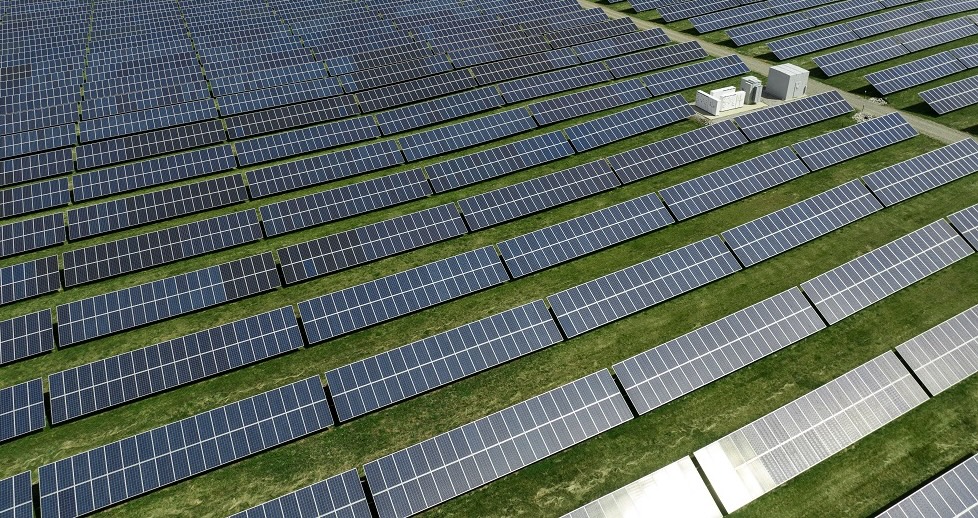Sign up for CleanTechnica’s Weekly Substack for Zach and Scott’s in-depth analyses and high level summaries, sign up for our daily newsletter, and/or follow us on Google News!

Along with the rest of the US auto industry, The Ford Motor Company is sailing into stormy seas, dodging unforced trade wars, a looming recession, and the rug being pulled out from under federal programs that support the vehicle electrification movement. Federal policy notwithstanding, though, the allure of clean power continues to attract US business leaders, as demonstrated by Ford’s new clean power purchase agreement with the Michigan utility DTE.
Biggest Ever Clean Power Deal With Utility
The new power purchase agreement between Ford and DTE is not just the biggest one struck between the two parties. DTE also states that it is the biggest clean power PPA from a utility in all of US history.
For those of you new to the topic, PPAs are routinely used to construct new utility-scale wind farms and solar arrays. They enable energy buyers to lock in credit for a fresh supply of kilowatts from a new power plant before construction begins. PPAs also provide energy infrastructure developers with a firm footing to solicit whatever other financing they need to complete their projects, so it’s a win-win all around.
As for the historical perspective, PPAs are a relatively new scattershot development in domestic energy-related transactions. They were authorized by federal law in 1978, as a response to the 1970s oil crisis. The idea was to make financing a new power plant easier, though to this day some states laws continue to prohibit PPAs outright, while others have imposed restrictions.
Still, laying claim to the biggest clean power PPA from a utility is a significant achievement that demonstrates how vital the PPA structure has been, and continues to be, for the US energy transition. It is also a big poke at President Trump’s multi-pronged efforts to withdraw federal support for wind and solar energy (especially offshore wind, but that’s a whole ‘nother can of worms).
650 More Megawatts Of Clean Power For Ford
The new solar PPA between Ford and DTE clocks in at 650 megawatts. If you can find a bigger one for a wind or solar project from a utility in all of US history, drop a note in the comment thread.
The new PPA is also of interest because it covers a series of new solar arrays, not just one power plant. DTE broke ground on the first one last week, a 100-megawatt solar array near Coldwater, Michigan.
“Ford’s purchase of 650 megawatts of renewable energy from DTE’s CleanVision MIGreenPower program is the larges[t] such purchase from a utility in U.S. history,” DTE asserts, referring to its voluntary opt-in subscription program for clean energy.
Amir Mirshahi, Ford’s director of Utilities and Energy Infrastructure, notes that the 650-megawatt PPA completes the company’s goal of attributing all of its electricity within Michigan to clean power. “It represents a significant step toward our goal of achieving carbon neutrality and will also help make our local Michigan communities more resilient to the impacts of climate change,” Mirshahi notes.
Mirshahi brings up two important points about PPAs. The electricity from a PPA-financed project goes into the grid, not directly to the user. Ratepayers still have to use whatever comes through the wires, including fossil energy. Still, PPA purchasers are authorized to attribute their clean kilowatts to their own energy profile, and PPAs help utilities push more fossil energy out of the grid mix.
More Renewable Energy For Michigan
DTE also used the occasion of groundbreaking to draw attention to the fact that federal energy policy is out of step with the rest of the nation. “Our customers – whether they are large manufacturers like Ford, or hometown businesses, or families – are telling us they want more renewable energy, and we will continue to develop and deliver it to them,” explained Matt Paul, DTE president and COE in a press release dated April 15.
The April 15 release also made it clear that the renewable energy transition will continue apace in sustainability-minded states like Michigan, regardless of the abrupt shift in federal energy policy.
“In 2025, DTE will have three new solar parks coming online in the first half of year, with three additional solar parks beginning construction,” DTE noted. “The developments will help DTE make significant progress toward its goal of achieving net zero carbon emissions as well as meeting the State of Michigan’s clean energy goals.”
All together, the six parks will add 800 megawatts to DTE’s power profile. “DTE’s renewable energy portfolio currently consists of 20 wind parks and 34 solar parks – all located in Michigan,” DTE reminds everyone.
Next Steps For Clean Power In The USA
For all the bloviating from the White House over coal, gas, and nuclear energy, the fact is that wind and solar — especially solar — are the quickest way to add new generating capacity to the US grid. That explains why data center stakeholders are falling over themselves to lock down solar and energy storage deals.
Nevertheless, the Trump energy policy umbrella locks out solar and wind from federal support. For reasons best known to the stable genius in the Oval Office, the US government still supports three other forms of renewable energy: geothermal, hydropower, and biomass.
On the geothermal side, utility-scale geothermal power plants were once confined to a scattershot of prime locations west of the Rocky Mountains. New enhanced geothermal technologies are finally extending the potential for establishing geothermal power plants elsewhere around the country, though the industry is still largely in the demonstrate-and-prove stage.
While that is going on, there has been a fresh burst of interest in small-scale distributed geothermal energy systems such as district heating and ground source heat pumps, which deploy conventional thermal technologies.
The outlook for hydropower is somewhat more mixed. The US Department of Energy has been supporting various means of expanding hydropower in the US without necessarily relying on massive new hydropower dams. Pumped hydropower reservoirs are one option. Hydrokinetic technology is also in the mix. However, it remains to be seen if the agency has enough personnel to support left to those programs after the DOGE chainsaw goes to work.
As for biofuels, despite a big thumbs-up for ethanol from Trump, some stakeholders are concerned about new risks from the President’s own tariff policies, which threaten to crimp biomass supply chains.
Ongoing land use issues present another obstacle as demand for alternative fuels ramps up, potentially competing with food crops. The algae biofuel field offers the potential to avoid such conflicts, though commercial scaleup has proved elusive so far. Another source of competition is also looming from the emerging e-fuels or “solar fuels” industry, so stay tuned for more on that.
Photo: Despite an abrupt shift in federal energy policy, Ford and the Michigan utility DTE have both doubled down on their clean power commitments, through a new 650-megawatt power purchase agreement (courtesy of DTE via globalnewswire.com).
Whether you have solar power or not, please complete our latest solar power survey.
Have a tip for CleanTechnica? Want to advertise? Want to suggest a guest for our CleanTech Talk podcast? Contact us here.
Sign up for our daily newsletter for 15 new cleantech stories a day. Or sign up for our weekly one if daily is too frequent.
CleanTechnica uses affiliate links. See our policy here.
CleanTechnica’s Comment Policy



